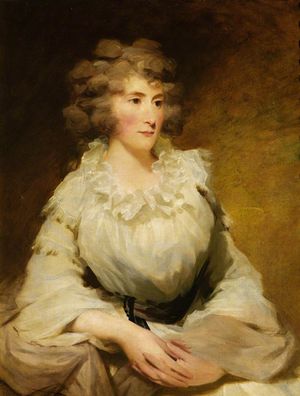Annotation:Mrs. Gordon of Cairness' Strathspey
X:1 T:Mrs. Gordon of Cairness' Strathspey C:William Christie (1778-1849) N:Christie was a dancing master, fiddler N:and composer from Cuminestown, Aberdeenshire. M:C L:1/16 R:Strathspey B:Christie - Collection of Strathspeys, Reels, Hornpipes, B:Waltzes &c. (Edinburgh, 1820, p. 25) Z:AK/Fiddler’s Companion K:A E2|~C3DEA3 CD3 {C}TE4|~C3DEA3 F2D2B,2D2|~C3DEA3 CD3 TE3C| {C}D3EFB3 GE3GB3|~C3DEA3 CD3 {C}TE4|~C3DEA3 F2E2B,2D2| ~C3DSEA3 ~G3AB2d2|c2A2e2c2 d2B2b2g2||{g}a3e .g.f.e.d c3d {cd}e3c| A3a .g.f.e.d ca3 B2b2|{g}a3e gfed ~c3d {cd}e3c|~d3ef2b2 .a.g.f.e gb3| {g}a3e gfed ~c3d {cd}e3c|a3a .g.f.e.d ca3 Bc3|Ac3 FA3 EA3 CE3|{C}D3EFB3 GE3GB3||

Charles's eldest son and successor, Major-General Wikipedia:Thomas_Gordon (1788–1841), 8th Laird of Buthlaw, and 2nd of Cairness, was a good friend of Wikipedia:Lord_Byron, and became a hero of the Wikipedia:Greek_War_of_Independence, writing a celebrated history of the conflict. In 1815 he traveled to again to Constantinople, where he married Barbara Kana, a lady of Armenian-Greek extraction (afterwards Baroness de Sedaiges). Gordon spent much of his life abroad, returning to Cairness briefly at points in his life, notably in 1814-1815, perhaps for a time prior to 1821 (the year he returned to Greece), 1827-1828 and at the end of his life. Gordon died at Cairness and was survived by his wife. He had no issue with her and in his will left most of his estate, including a large landholding in Jamaica, to an illegitimate son called Charles Wilkinson, who later took the surname Gordon. His existence seems to have been a secret from the rest of the family as he had been brought up by a tutor in Elgin. The inheritance caused much scandal and led to a long period of litigation within the family.
Christie would have been a young man (age 23) at the time of Christian's death in 1801, although it is still entirely possible the tune dates to that time. The publication date of his collection (1820) postdates General Gordon's marriage (1815) and predates his 1821 trip to Greece to participate in the Greek Revolution. It is possible he came into contact with the Gordons during the period 1815-1820, and composed this strathspey (one wonders what his Armenian-Greek spouse might have thought of it).

